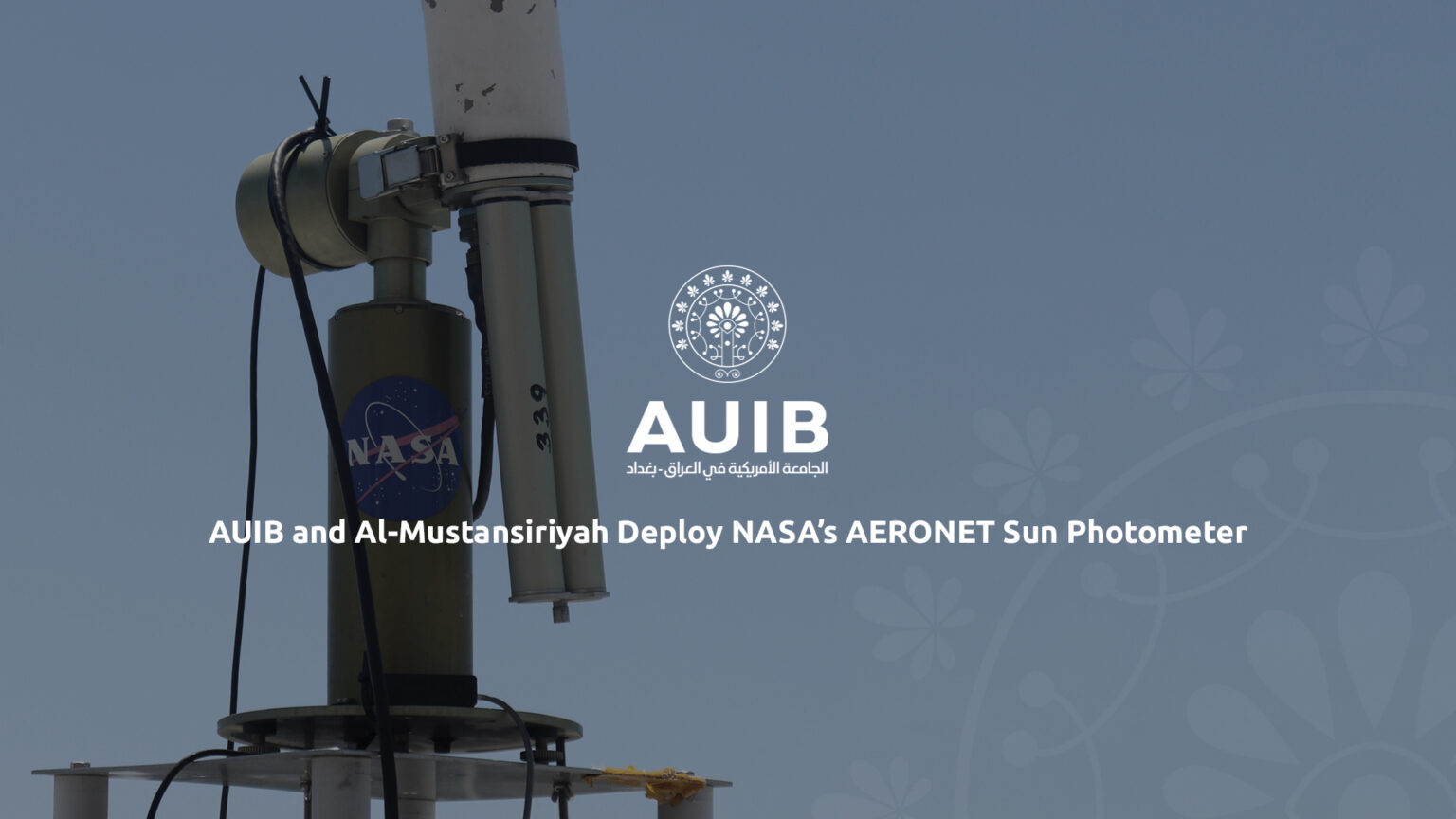In an effort aiming to enhance national and broader regional capabilities in atmospheric monitoring and relevant scientific research, the American University of Iraq-Baghdad (AUIB) and Al-Mustansiriyah University cooperated in deploying at Al-Mustansiriyah campus an AERONET (Aerosol Robotic Network) ground-based sun photometer system integrated into the global atmospheric observation network of the United States’ National Aeronautics and Space Administration (NASA).
AERONET is a federation of ground based remote sensing aerosol networks established by NASA and the Laboratory of Atmospheric Optics at Université de Lille of France, “greatly expanded by networks and collaborators from national agencies, institutes, universities, individual scientists, and partners,” as per NASA. The network provides a long-term, continuous database of aerosol optical depth (AOD), microphysical properties, and radiative characteristics, used to characterize aerosols, validate satellite retrievals and synergize with other atmospheric databases.
The deployment of this networked device enables research and informs policy on environmental, health, and energy issues, making it especially important for Iraq and the broader region. Human exposure to fine particles in the air contributes to millions of premature deaths globally each year. AERONET data can inform health protection policies, such as issuing dust storm warnings, optimizing hospital preparedness, and guiding urban planning to reduce particulate exposure. It can also support climate mitigation measures, including assessments of renewable energy potential under varying aerosol conditions. Accurate aerosol measurements support models that estimate visibility reduction, solar energy potential and radiative forcing, informing environmental management and renewable energy planning.
